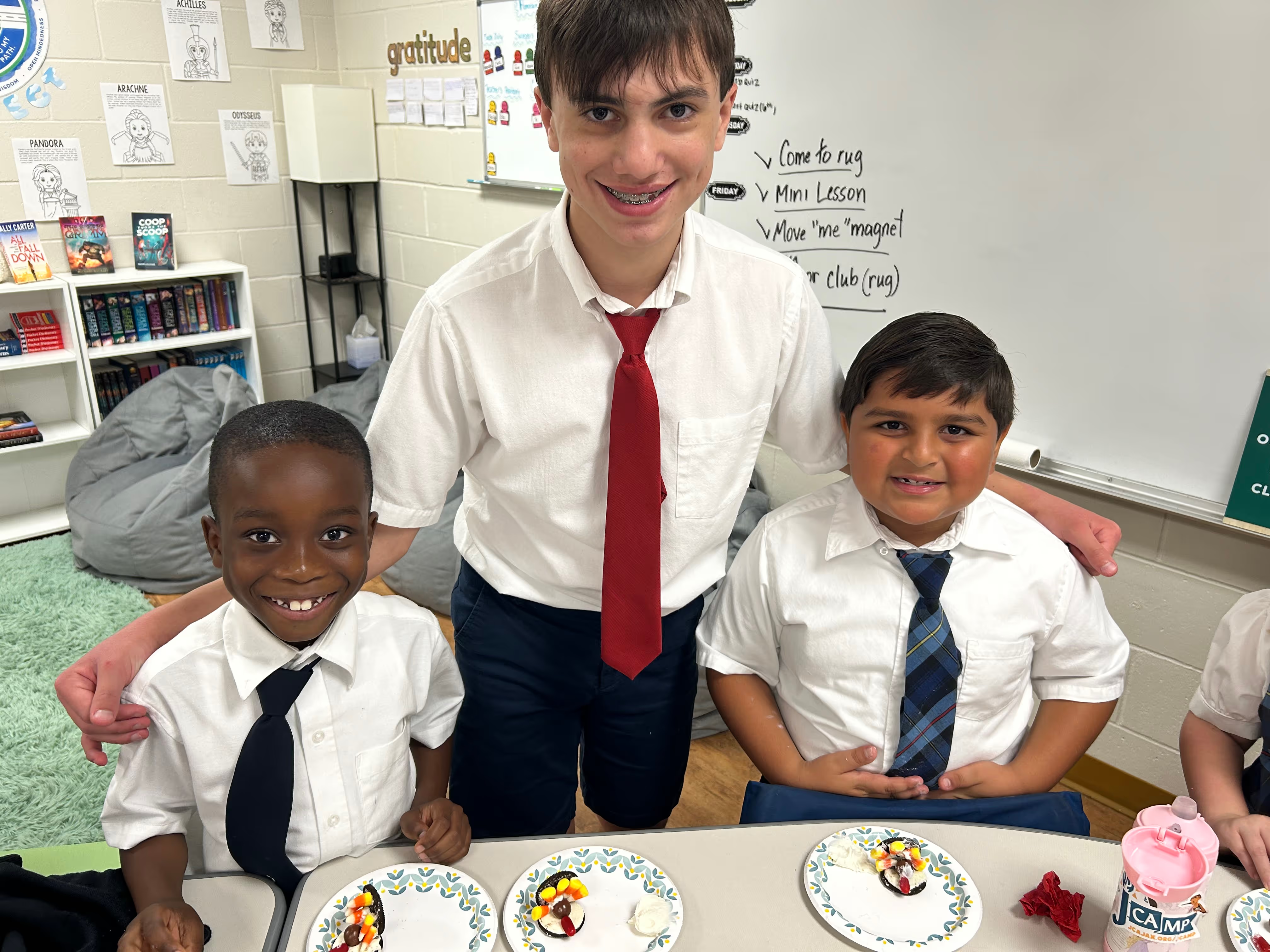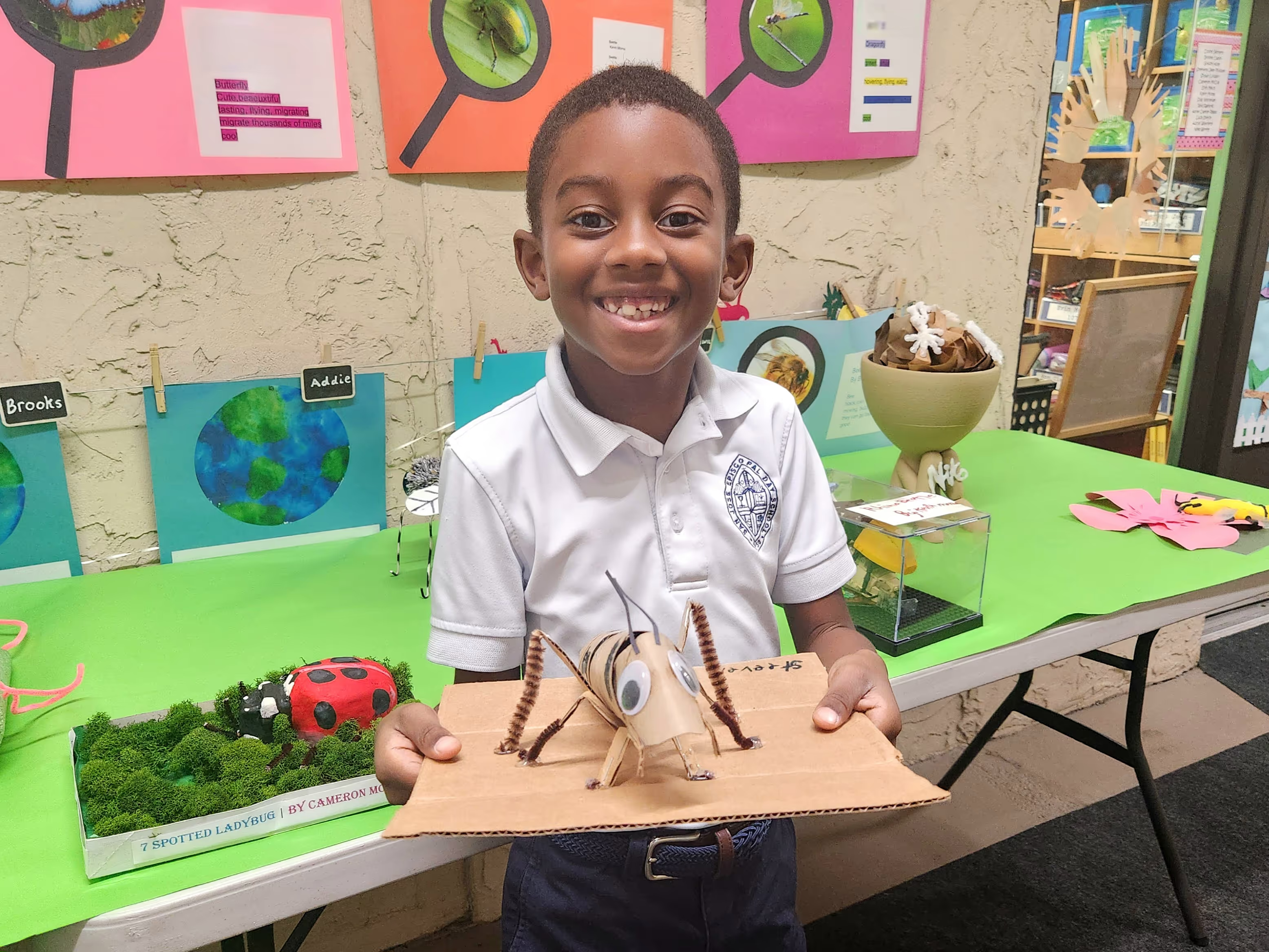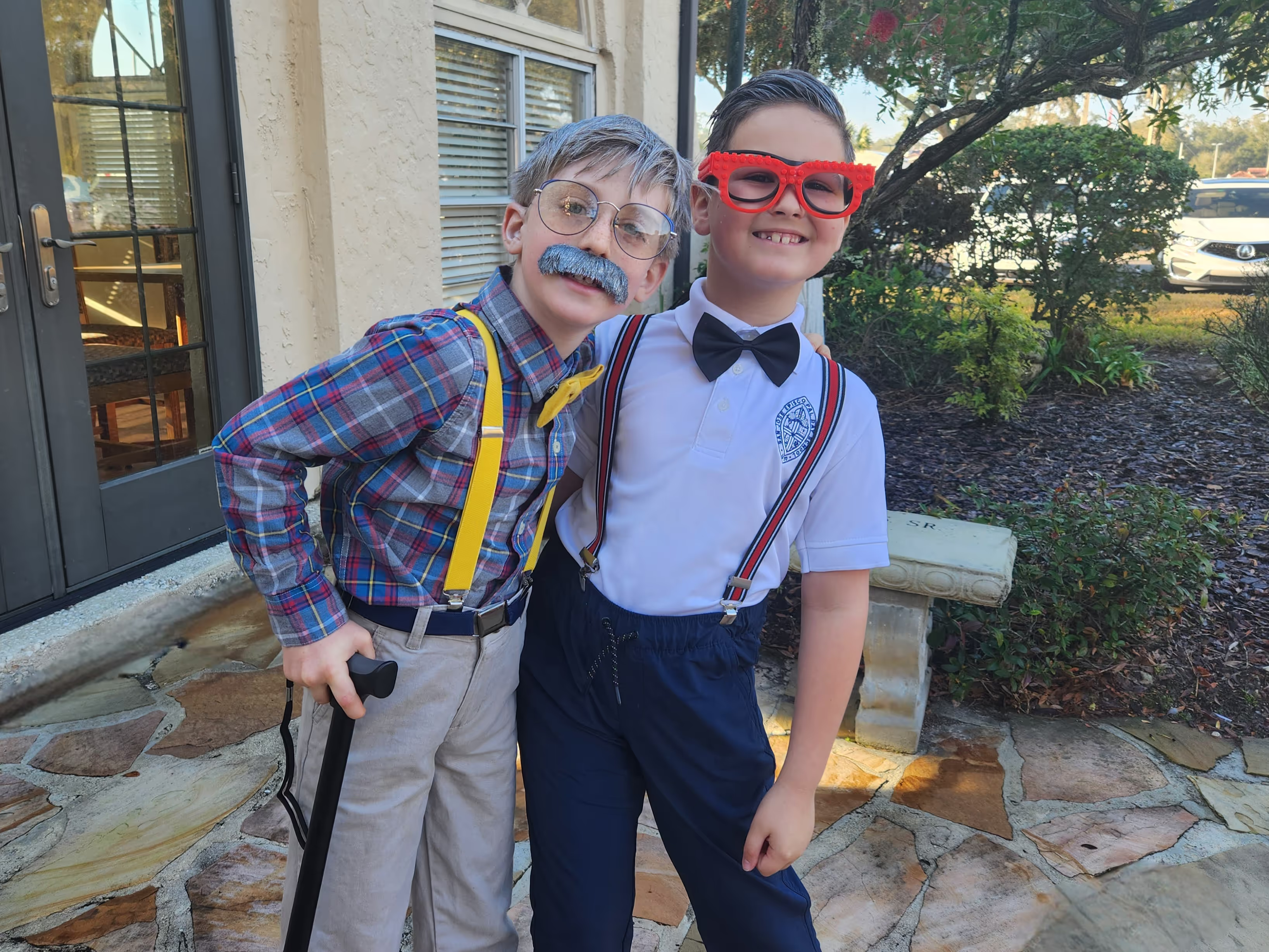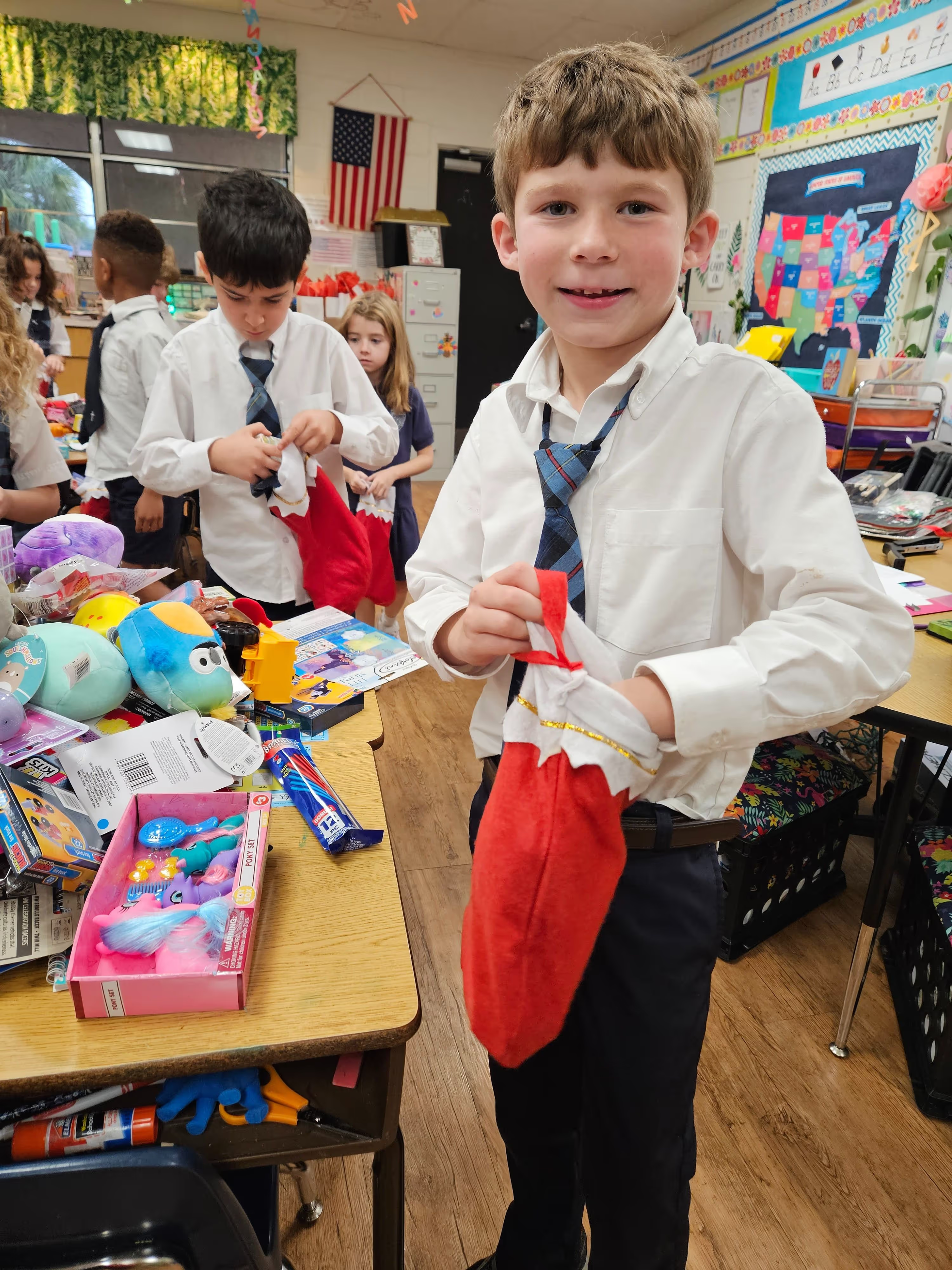
First Grade Curriculum
Step into one of our first grade classrooms and you’ll witness the astonishing growth that our students experience as they transition from approximating the reading process to becoming avid, confident readers. Immersed in a print-rich environment, they learn to navigate books with ever-increasing independence—identifying favorite genres, titles, authors, illustrators, and text features like tables of contents, headers, captions, and glossaries with ease. Ongoing whole- and small-group instruction in phonological awareness and phonics helps students to build the decoding skills necessary to tackle unfamiliar words with increasing ease and accuracy. Across choral reading, guided reading, buddy reading, and independent reading contexts, their fluency blossoms as they learn how to connect words into smooth phrases and how to infuse their voice with expression that conveys the text’s meaning.
Throughout the year, students engage in rich conversations about the texts they read, identifying story elements, discussing the moral or lesson, and analyzing characters’ points of view. In nonfiction reading, they learn to extract key ideas, explore the author’s opinion, and use text features—like maps, diagrams, and captions—to deepen their understanding. Comparing texts on similar topics helps them think critically, while exploring descriptive language and growing their vocabulary empowers them to read and speak with precision and purpose. Retelling stories and summarizing information helps reinforce comprehension, while also building confidence in oral and written communication.
Likewise, writing in first grade becomes a powerful tool for self-expression and learning. Students write across a variety of genres, crafting detailed narratives, sharing informed opinions with reasons, and presenting factual information on topics they’ve explored. They use technology to publish their writing, enhance presentations with multimedia elements, and collaborate with classmates in digital spaces. With guidance, they plan, revise, and edit their work, applying grammar, punctuation, and spelling skills appropriate to their developmental level. By the end of the year, our first graders have become capable, creative communicators—readers and writers who think deeply, speak confidently, and express themselves with growing independence and joy.
Skills & Understandings:
- Navigate books with confidence, easily locating the title, table of contents, author, illustrator, headings, and the glossary to understand how print is organized
- Build strong phonological awareness and apply first‑grade phonics and word‑analysis skills to decode unfamiliar words accurately
- Read grade‑level texts fluently, showing accuracy, automaticity, and lively prosody that brings stories to life
- Identify key story elements—characters, setting, major events—determine who is telling the story, and identify the moral or lesson
- Recognize stanzas and line breaks to interpret rhythm and meaning in poetry
- Use text features (titles, headings, captions, maps, graphs, glossaries, illustrations) to deepen understanding of informational texts
- Determine a text’s topic, relevant details, and the author’s opinion, and explain how visuals and words convey similar or different information
- Retell literary and informational texts in sequence or by topic and compare two texts on the same subject to highlight similarities and differences
- Explore descriptive language and expand vocabulary, using context clues, word parts, reference tools, and knowledge of base words and inflections
- Print all upper and lowercase letters and apply grade‑level conventions of grammar, capitalization, punctuation, and spelling in writing
- Write well‑sequenced narratives, opinion pieces with reasons, and expository texts with facts, each with a clear sense of closure
- Plan, revise, and edit writing with guidance, incorporating digital tools and multimedia elements to publish polished work
- Present information orally in complete sentences with appropriate volume, and conduct simple research projects to answer questions on a single topic
- Use technology and digital tools—with adult support—to produce and publish writing, collaborate with peers, and enhance oral or written work through multimedia elements
In first grade, our young mathematicians engage in an inquiry-based approach using a variety of hands-on tools and manipulatives to build a strong foundation in number sense, algebraic thinking, and measurement. Throughout the year, they explore numbers from 0 to 120 while developing fluency in counting and operations, recognizing patterns, understanding the relationship between addition and subtraction, and analyzing mathematical change. Students also learn measurement strategies, how to interpret data using pictographs and tally marks, how to tell time to the hour and half hour using analog and digital clocks, how to identify, sort, and classify two- and three-dimensional shapes, and how to partition shapes into halves and quarter, laying essential groundwork for future mathematical understanding.
Skills & Understandings:
- Add and subtract with facts to 10 with fluency and automaticity
- Add and subtract with facts to 20 and solve word problems involving facts to 20
- Collect, represent, and interpret data using pictographs and tally marks
- Extend the counting sequence from anywhere within 100
- Understand place value
- Plot, order, and compare two-digit numbers
- Add and subtract with numbers to 100
- Compare and measure lengths
- Develop an understanding of fractions by partitioning shapes into halves and fourths
- Tell time to the hour and half hour using analog and digital clocks
- Identify the value of coins and dollar bills
- Identify and analyze two-dimensional and three-dimensional figures
In first grade science, students dive into hands-on, inquiry-based investigations that spark curiosity and build a strong foundation for understanding the natural world. Guided by the Next Generation Science Standards (NGSS) and ISTE Standards for technology integration, students become empowered learners and critical thinkers as they explore a wide range of topics—from sound and light, to motion and gravity, to the life cycles and structures of plants and animals. As knowledge constructors, they collect data through observation, use digital tools to research and record findings, and recognize patterns in weather and celestial movement. Students become innovative designers when they use their creativity to build and test simple devices that solve problems, such as communication tools that use light or sound. They learn to think computationally as they plan, test, and improve their models, using evidence to compare solutions. With a strong emphasis on collaboration, students work together to ask questions, share discoveries, and solve challenges, becoming global collaborators and responsible digital citizens in the process. First grade science is a joyful and dynamic blend of curiosity, creativity, and discovery, where young learners develop the habits of scientists, engineers, and thoughtful users of technology.
Skills & Understandings:
- Observe, describe, and sort objects and living things using the five senses and properties such as size, shape, texture, weight, color, and motion
- Use simple tools—hand lenses, magnifiers, rulers, and models—to extend the senses, letting students see tiny details or distant objects that are otherwise hard to observe
- Demonstrate how pushes, pulls, and gravity change motion, showing that objects can move in straight, zig‑zag, circular, fast, or slow ways and that a push or pull can start, stop, or redirect them
- Investigate sound and light: discover that vibrating materials make sound (and vice‑versa) and test how different materials block, bend, or let light through so we can see
- Design and build simple devices—like shadow signals or cup‑and‑string telephones—that use light or sound to communicate, then test and improve them
- Identify plant parts (roots, stems, leaves, flowers) and explain how each part helps the plant live and grow
- Explore animal body parts—wings, beaks, feet, fur—and create models that imitate how those structures help animals survive
- Learn from stories, videos, and real observations how parent and offspring behaviors—feeding, guarding, following—help young animals survive
- Observe that young plants and animals look like, but are not identical to, their parents, noting the natural variations within a family
- Distinguish living from non‑living things and recognize that water, rocks, soil, and organisms are all found on Earth’s surface
- Use sky observations to find predictable patterns in the sun, moon, and stars, such as where they rise, travel, and set
First-grade social studies opens students’ eyes to the stories of people, places, and events that shape our world, past and present. Throughout the year, students begin to develop historical thinking skills by exploring primary sources, using library and media resources to investigate the past, and distinguishing fact from fiction. They compare life today with life long ago and learn that holidays and celebrations help us honor the heroism and contributions of diverse individuals and cultures, including important African American figures and artists. Students explore ideas of character by learning about historical figures who modeled courage, honesty, and responsibility. They build chronological awareness by sequencing events from their lives and creating personal timelines.
In geography, students learn to read and create simple maps using elements like a compass rose, a map key, and symbols. They use maps and globes to locate their community, Florida, and surrounding bodies of water, while also considering how location and environment influence daily life. Foundational economic concepts are introduced as students learn to identify goods and services, understand the role of buyers and sellers, and explore ideas like scarcity, savings, and cost. As emerging citizens, students learn the purpose of rules and laws, recognize patriotic symbols, explore the U.S. and Florida Constitutions, and begin to understand their rights and responsibilities within their school community. Through all of these experiences, first graders are growing into thoughtful, informed citizens who are beginning to understand their place in a broader world.
Skills & Understandings:
- Understand that history tells the story of people and events from other times and places
- Develop an understanding of primary sources and use the media center/other resources to explore historical topics
- Distinguish between historical facts and fiction using various materials
- Use time-related vocabulary and create personal timelines to sequence events in life, school, and community
- Compare life now with life in the past
- Identify national holidays and celebrations as ways to honor significant people, events, and our nation’s ethnic heritage
- Learn about historical figures, especially those showing honesty, courage, and responsibility, including African American artists and changemakers
- Use and construct basic maps with elements like the compass rose, title, legend, and cardinal directions
- Locate places on maps and globes, including the local community, Florida, the Atlantic Ocean, and the Gulf of America
- Identify landforms and physical features, and describe how location, weather, and environment influence how people live
- Explain the purpose and importance of rules and laws at home, school, and in the community
- Understand rights and responsibilities in the school community and describe characteristics of good citizenship
- Understand that money is used to exchange goods and services and distinguish between goods, services, buyers, sellers, and producers
Schedule a Tour
Come see for yourself why SJEDS is an investment in a brighter future.






.avif)


%20(1).avif)

